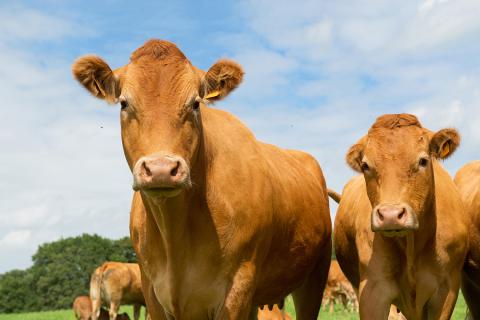MERS Antibodies Produced In Cattle Safe, Treatment Well Tolerated in Trial

Photo: IVONNEW/ThinkStock
An experimental treatment developed from cattle plasma for Middle East respiratory syndrome (MERS) coronavirus infection shows broad potential, according to a small clinical trial led by NIH scientists and their colleagues. The treatment, SAB-301, was safe and well tolerated by healthy volunteers, with only minor reactions documented. The results were reported in The Lancet Infectious Diseases.
The first confirmed case of MERS was reported in Saudi Arabia in 2012. Since then, the MERS coronavirus has spread to 27 countries and sickened more than 2,000 people, of whom about 35 percent have died, according to the World Health Organization. There are no licensed treatments for MERS.
SAB-301 was developed by SAB Biotherapeutics of Sioux Falls, South Dakota, and has been successfully tested in mice. The treatment comes from so-called “transchromosomic cattle.” These cattle have genes that have been slightly altered to enable them to produce fully human antibodies instead of cow antibodies against killed microbes with which they have been vaccinated—in this case the MERS virus. The clinical trial, conducted by NIAID, took place at the Clinical Center.
In the study, 28 healthy volunteers were treated with SAB-301 and 10 received a placebo. Six groups of volunteers given different intravenous doses were assessed 6 times over 90 days. Complaints among the treatment and placebo groups—such as headache and common cold symptoms—were similar and generally mild.
The researchers believe they may be able to use transchromosomic cattle to rapidly produce human antibodies against other human pathogens as well, in as few as 3 months. This means they could conceivably develop antibody treatments against a variety of infectious diseases in a much faster timeframe and in much greater volume than currently possible.
